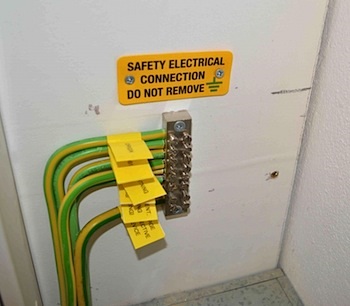This is a question about (iii) of 514.13.1 of BS 7671:2022.
BS 7671:2022
514.13.1 A durable warning notice with the words 'Safety Electrical Connection - Do Not Remove' shall be securely fixed in a visible position at or near:
(i) the point of connection of every earthing conductor to an earth electrode, and
(ii) the point of connection of every bonding conductor to an extraneous-conductive-part, and
(iii) the main earthing terminal; where separate from main switchgear.
Q) I am wondering where does (iii) refer to, and why it is necessary to install the warning notices there?
